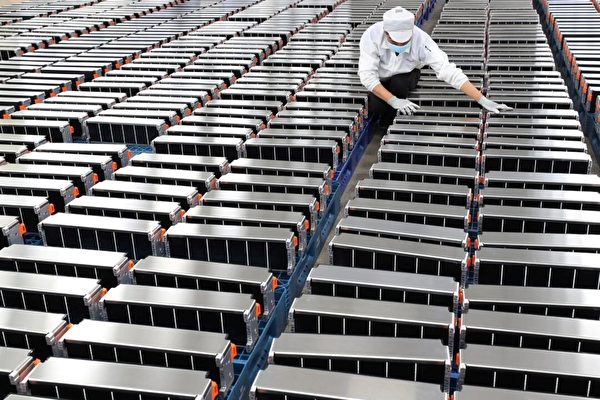In recent years, China’s ongoing real estate crisis has severely weighed down its economy, leaving ordinary consumers feeling dispirited and many private business owners disillusioned. In light of this, the Chinese Communist government has shifted its national focus towards manufacturing, particularly in what they refer to as the “new quality productivity” sectors.
These sectors include semiconductor, electric vehicle (EV) batteries, solar and wind power generation, among others. As China still largely operates as a command economy, funds have been directed towards these areas. Yet, seemingly no one has considered where the output from these investments will flow. The sluggish domestic economy cannot absorb it, and Western developed countries have historically resisted Chinese trade for various reasons. Currently, China’s manufacturing capacity in these sectors exceeds its own domestic demand, offering little help to its economy.
Sources from the US, Europe, and Japan have all pointed out the troublesome issue of China’s excess manufacturing capacity. The European Union (EU), in particular, attributes China’s dumping of cheap electric cars into the European market to this problem. The scale of China’s dumping is so significant that the EU is preparing to impose hefty tariffs on these products.
Unsurprisingly, Chinese leadership has denied the existence of any excess capacity. According to Chinese President Xi Jinping’s recent remarks, “there is no such thing as excess manufacturing capacity in China.” He believes that Chinese electric cars flooding into Europe are simply better and more competitive than Western products. While he may be right about the competitiveness of Chinese electric cars, it does not negate the issue of excess capacity. Various sources within China indicate that he is mistaken on this point.
Signs of excess capacity also exist in sectors not considered part of the “new quality productivity” areas. For example, the growth in steel production far surpasses domestic demand. In 2001, China’s steel production was roughly equal to domestic consumption. By 2023, steel output exceeded domestic demand by 5%, and this year it is projected to exceed it by 8%.
This largely reflects the impact of the real estate crisis and the collapse of the construction industry’s demand for steel. However, it still amounts to surplus capacity. Solar panels, designated as one of the supported sectors, face an even greater surplus. Domestic installations have surged from 50 gigawatts last year to a possible 90 gigawatts this year. However, production has far outpaced this rate, with indications suggesting it may climb to over 150 gigawatts this year. One can’t help but wonder where China plans to sell all these solar panels.
While less direct, other phenomena also illustrate the same problem. Last year, at the onset of the “new quality productivity” concept, investments in electrical equipment and electric vehicles soared. Investment in the former increased by 40%, while investment in the latter rose by 25%, both well exceeding the overall manufacturing capacity growth of 5%.
This year, investments in electrical equipment and electric vehicles have eased slightly, currently lagging behind the overall manufacturing investment growth rate. This seems to signal the acknowledgment that such growth was never reasonable. Yet, the previous surge in spending has clearly led to excess capacity. If not directly measurable, the decline in manufacturing sector profit margins can attest to this. Currently, manufacturing profit margins are around 2 percentage points lower than the long-term average.
In a rapidly expanding economy like China once played the economic role, excess capacity issues could find remedies within a short year or two of demand growth, often even shorter. Additionally, if China were still the world’s factory as in the past, excess capacity would diminish quickly. However, with China’s current modest economic growth and no longer being the world’s factory, excess capacity is likely to persist for some time and exacerbate other economic problems. Given the changed attitudes of Western developed countries and Japan towards trade with China, which are no longer as deeply engaged as before, balancing China’s economy will require more time. This is not the first time that planners in Beijing have exacerbated China’s economic problems.
This translation has been provided by [Your Name], a professional translator specializing in news articles and publications.

